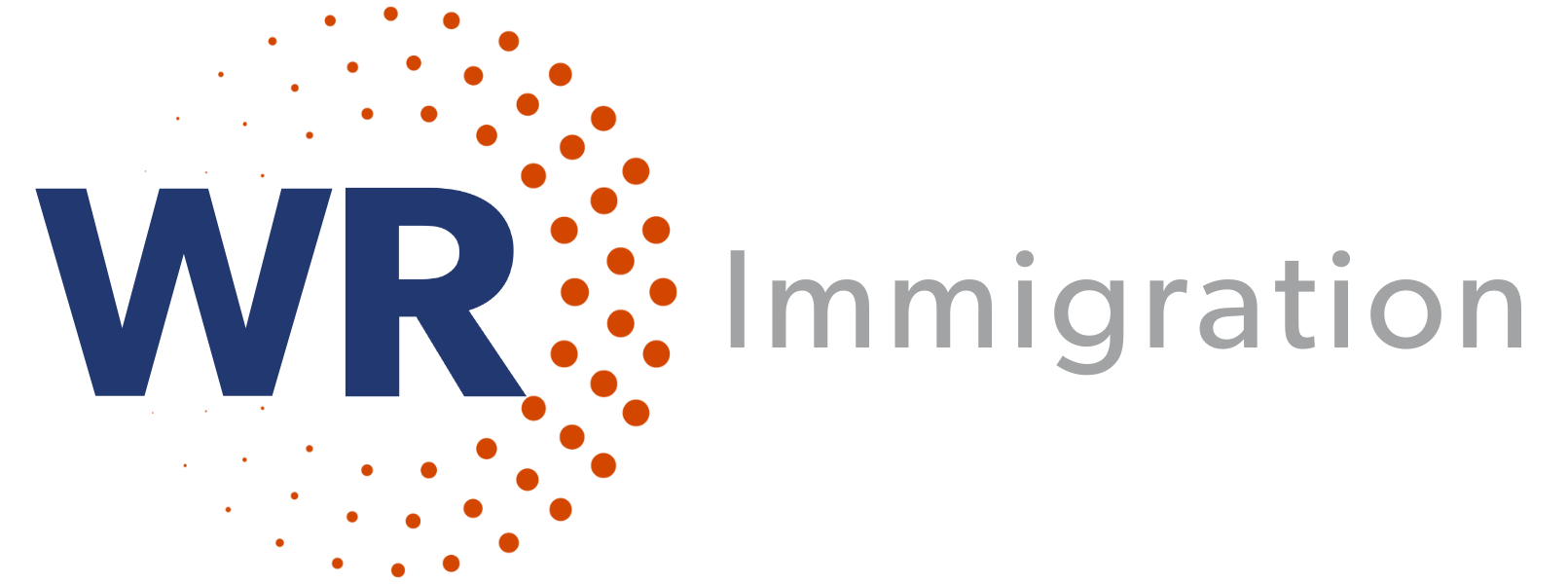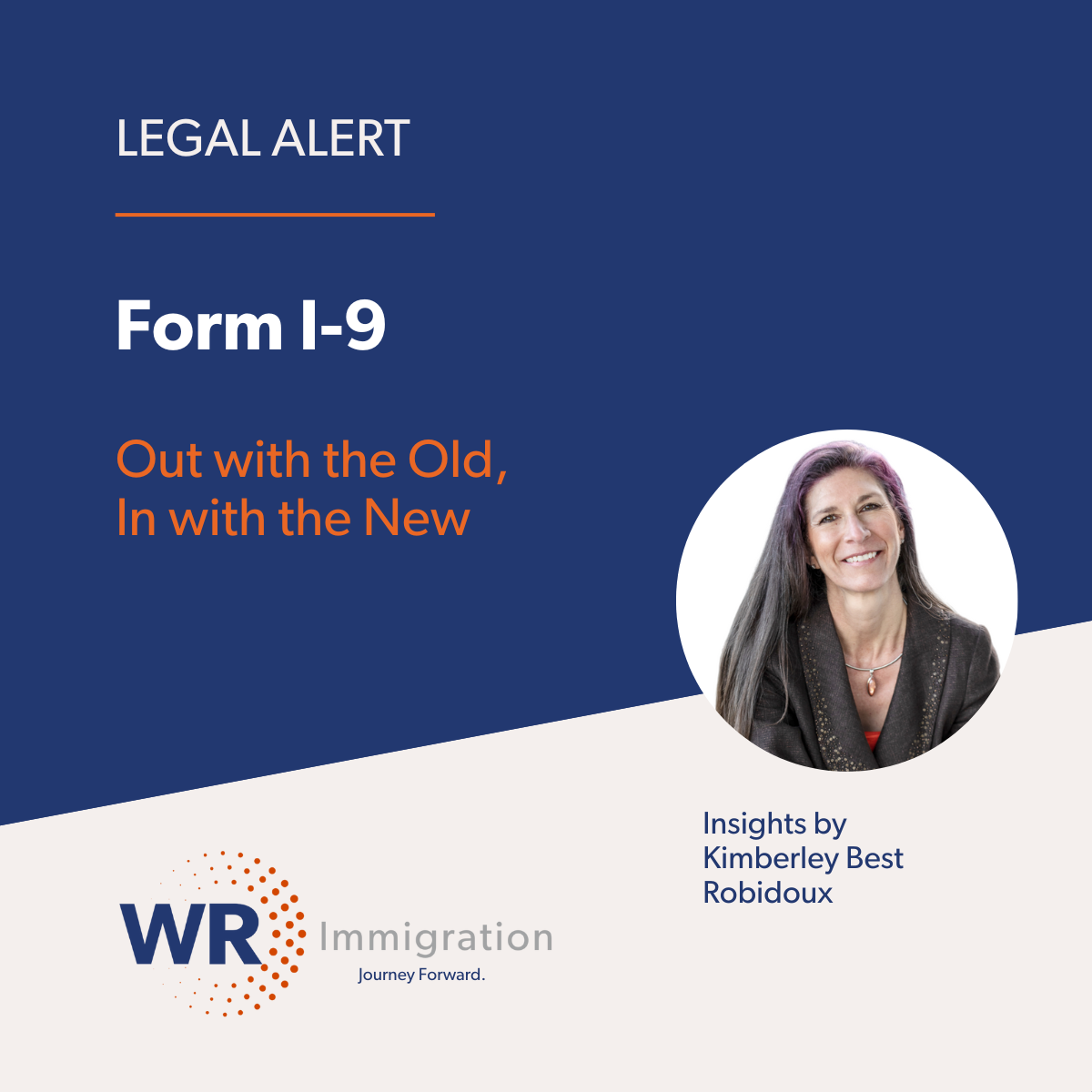By Kimberley Best Robidoux
Are you ready for November 1? If you’re wondering why we’re asking, it’s because November 1 is the day that employers may use ONLY the new edition of the Form I-9 (dated 08/01/2023).
If you didn’t remember, never fear. At WR Immigration, we are I-9 geeks and keep track of all these dates so you don’t have to. And the new I-9 is definitely something to get excited about: it’s back to one page again (if you don’t count Supplement A (Preparer/Translator) and Supplement B (Rehire and Reverification), that is).
Not only is the Form I-9 a one-page form again, but the instruction pages have been reduced from 15 to 8 and the List of Acceptable Documents (LOAD) has been slightly updated to provide employers and employees with links to I-9 Central and the M-274 Handbook for Employers that contain detailed information about many of the documents that are acceptable but not specifically listed on the LOAD. If you’re unsure or unaware of the details of the 50+ additional acceptable documents, contact a WR Immigration attorney for assistance to avoid potential discrimination in the I-9 process.
And, do not forget about the new Alternative Procedure that allows for the virtual review of identity and work authorization documents to complete the I-9 process for E-Verify employers provided that they meet all of the necessary requirements to participate in this program that almost brings the Form I-9 process into the 21st Century!
Those who are you just now learning about the new Form I-9, who would like a refresher on the new form and Alternative Procedure (as well as the Reinspection process), or who are trying to get caught up on the physical inspection of the Forms I-9 completed using COVID-19 Flexibilities, can check out our two previous 2023 I-9 webinars here. And please join us for a webinar on December 5th at 11:00 a.m. Pacific/2:00 p.m. Eastern for “Wait–What Happened with the Form I-9?” A Year-End Recap of USDHS’s Changes to Form I-9 and Processes in 2023. In this webinar, WR Immigration Partner Kimberley Robidoux will address all of your nagging I-9 questions and concerns, and get you ready to face 2024 with your I-9 practices and procedures securely in place.


